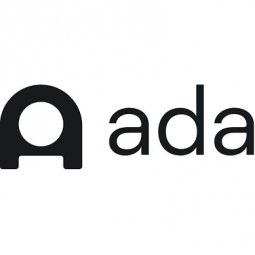Download PDF
AI-Driven Customer Service Transformation: A Case Study on Qapital
Technology Category
- Platform as a Service (PaaS) - Application Development Platforms
Applicable Industries
- Cement
- Finance & Insurance
Applicable Functions
- Product Research & Development
- Sales & Marketing
Use Cases
- Chatbots
- Time Sensitive Networking
The Challenge
Qapital, a mobile-only banking service, was facing a significant challenge in managing customer service inquiries. Despite being recognized as 'the Most Innovative App of the Year' by Google in 2017, Qapital's reliance on Zendesk live agents for customer service was proving to be a bottleneck. The company was experiencing long wait times and an ever-growing ticket list, which was not only frustrating for customers but also made it difficult for the agents to focus on more complex questions. As a company that aimed to digitize the conservative banking industry, Qapital was keen on bringing the same level of innovation to its customer support.
About The Customer
Qapital is a mobile-only banking service that was listed by Google as ‘the Most Innovative App of the Year’ in 2017. The company was founded with the aim of digitizing the conservative banking industry, making it easier and more intuitive for customers to plan, invest, and save based on their personal finance goals. As the company grew, it saved its customers more than $1 billion. However, its reliance on Zendesk live agents for customer service was creating roadblocks, with long wait times and an ever-growing ticket list.
The Solution
Qapital decided to integrate an AI-powered customer service chatbot to handle customer inquiries. The company partnered with Ada's Automated Customer Experience (ACX) Consultants to launch a 24/7 AI-powered customer service chatbot in just 30 days. The chatbot was designed to integrate seamlessly with Zendesk, providing a smooth transition from bot to live agent when necessary. It also offered a mobile-friendly, omnichannel experience. Importantly, the chatbot could be managed by a non-technical team, allowing a customer support agent to build and manage the chatbot without the need for developers. This enabled the support agent to create, add, update, and strengthen content instantly whenever required.
Operational Impact
Quantitative Benefit
Related Case Studies.

Case Study
System 800xA at Indian Cement Plants
Chettinad Cement recognized that further efficiencies could be achieved in its cement manufacturing process. It looked to investing in comprehensive operational and control technologies to manage and derive productivity and energy efficiency gains from the assets on Line 2, their second plant in India.

Case Study
Real-time In-vehicle Monitoring
The telematic solution provides this vital premium-adjusting information. The solution also helps detect and deter vehicle or trailer theft – as soon as a theft occurs, monitoring personnel can alert the appropriate authorities, providing an exact location.“With more and more insurance companies and major fleet operators interested in monitoring driver behaviour on the grounds of road safety, efficient logistics and costs, the market for this type of device and associated e-business services is growing rapidly within Italy and the rest of Europe,” says Franco.“The insurance companies are especially interested in the pay-per-use and pay-as-you-drive applications while other organisations employ the technology for road user charging.”“One million vehicles in Italy currently carry such devices and forecasts indicate that the European market will increase tenfold by 2014.However, for our technology to work effectively, we needed a highly reliable wireless data network to carry the information between the vehicles and monitoring stations.”

Case Study
Safety First with Folksam
The competitiveness of the car insurance market is driving UBI growth as a means for insurance companies to differentiate their customer propositions as well as improving operational efficiency. An insurance model - usage-based insurance ("UBI") - offers possibilities for insurers to do more efficient market segmentation and accurate risk assessment and pricing. Insurers require an IoT solution for the purpose of data collection and performance analysis

Case Study
Smooth Transition to Energy Savings
The building was equipped with four end-of-life Trane water cooled chillers, located in the basement. Johnson Controls installed four York water cooled centrifugal chillers with unit mounted variable speed drives and a total installed cooling capacity of 6,8 MW. Each chiller has a capacity of 1,6 MW (variable to 1.9MW depending upon condenser water temperatures). Johnson Controls needed to design the equipment in such way that it would fit the dimensional constraints of the existing plant area and plant access route but also the specific performance requirements of the client. Morgan Stanley required the chiller plant to match the building load profile, turn down to match the low load requirement when needed and provide an improvement in the Energy Efficiency Ratio across the entire operating range. Other requirements were a reduction in the chiller noise level to improve the working environment in the plant room and a wide operating envelope coupled with intelligent controls to allow possible variation in both flow rate and temperature. The latter was needed to leverage increased capacity from a reduced number of machines during the different installation phases and allow future enhancement to a variable primary flow system.

Case Study
Automated Pallet Labeling Solution for SPR Packaging
SPR Packaging, an American supplier of packaging solutions, was in search of an automated pallet labeling solution that could meet their immediate and future needs. They aimed to equip their lines with automatic printer applicators, but also required a solution that could interface with their accounting software. The challenge was to find a system that could read a 2D code on pallets at the stretch wrapper, track the pallet, and flag any pallets with unread barcodes for inspection. The pallets could be single or double stacked, and the system needed to be able to differentiate between the two. SPR Packaging sought a system integrator with extensive experience in advanced printing and tracking solutions to provide a complete traceability system.






